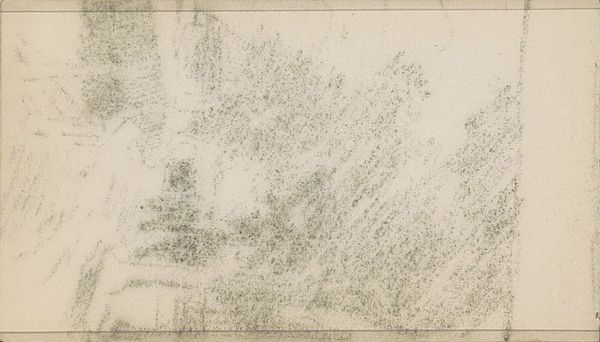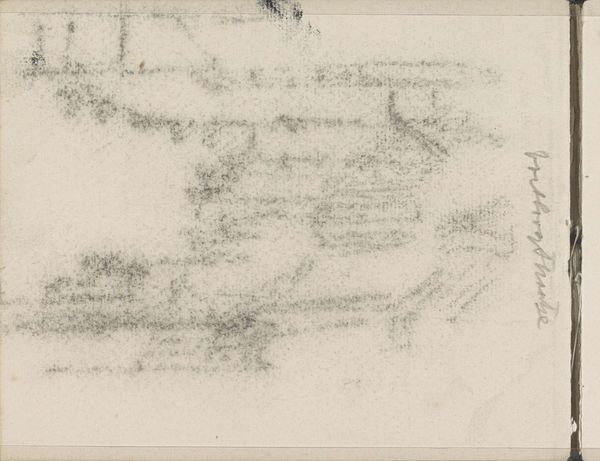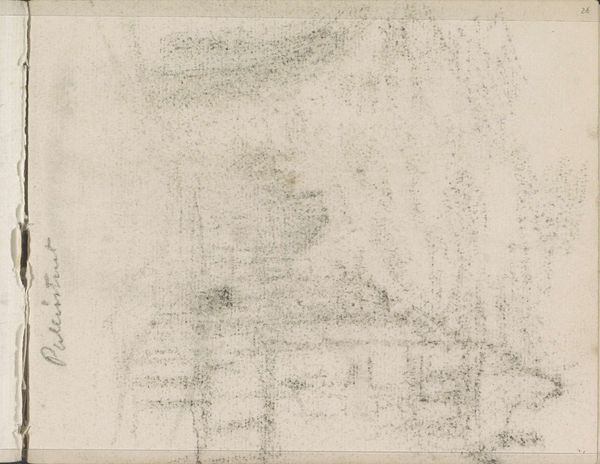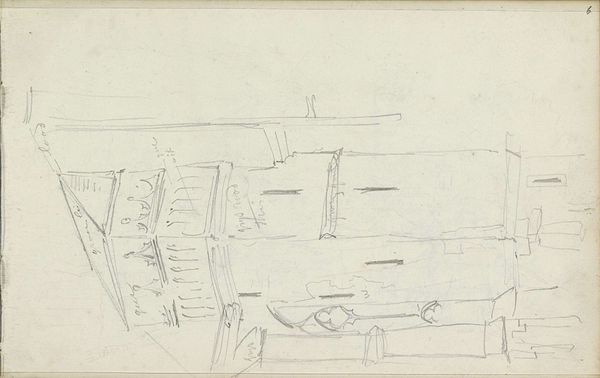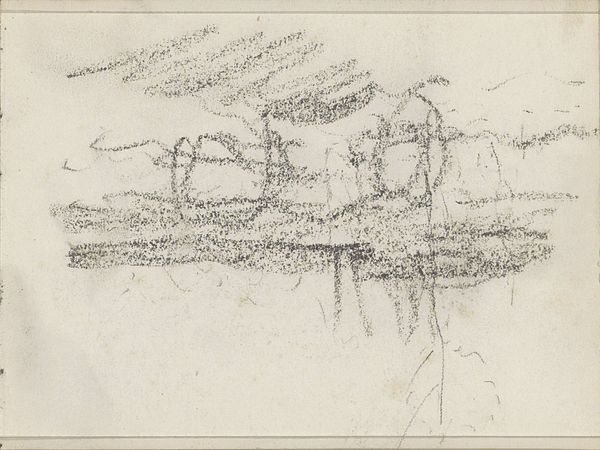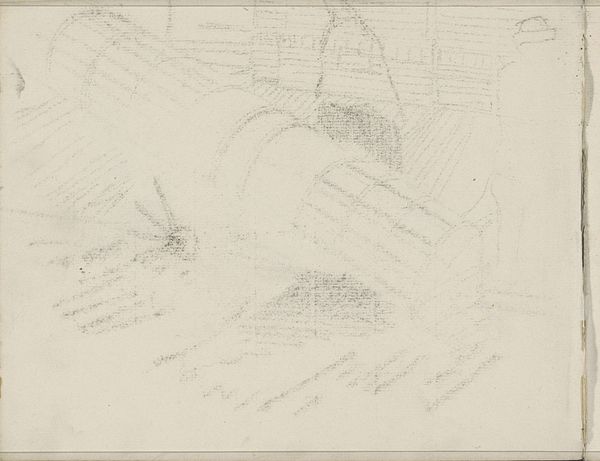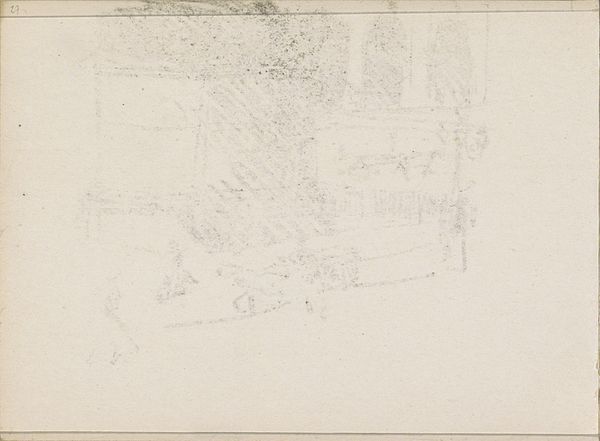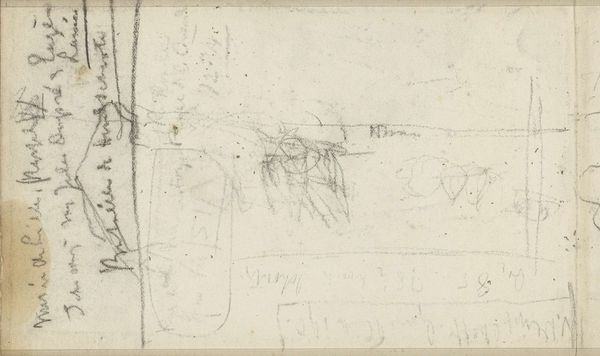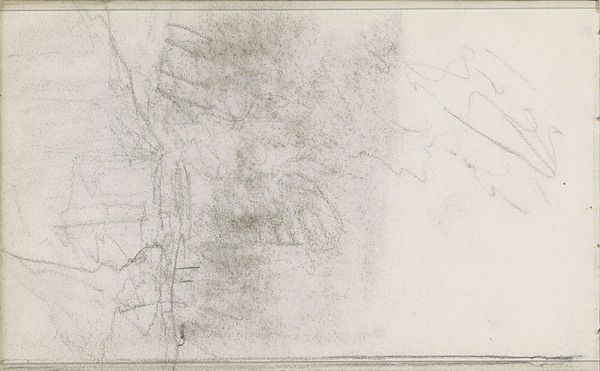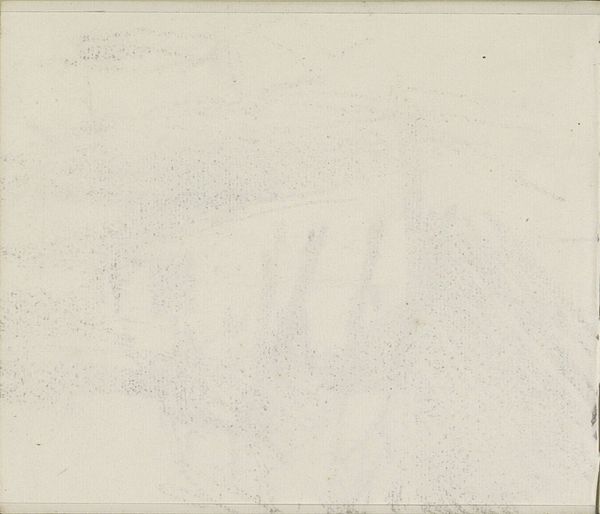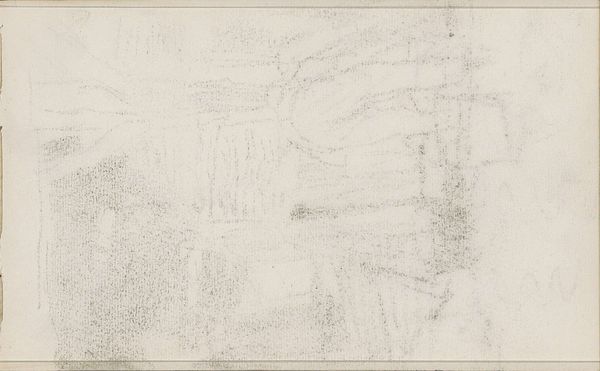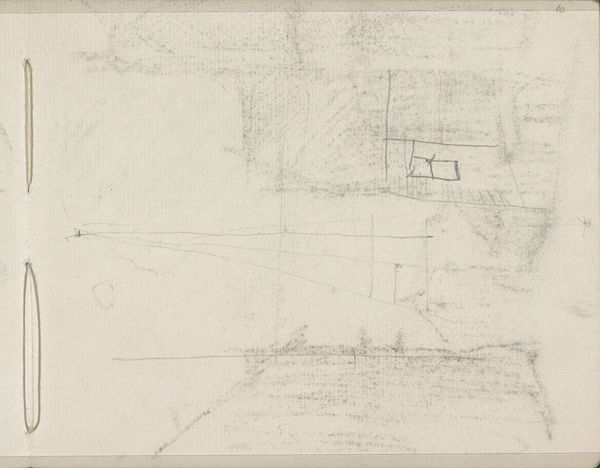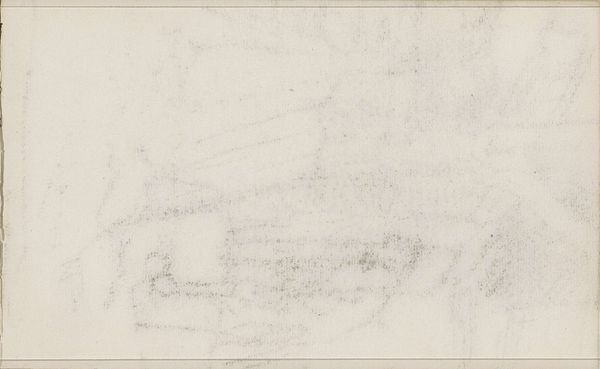
drawing, paper, pencil
#
pencil drawn
#
drawing
#
impressionism
#
pencil sketch
#
landscape
#
etching
#
paper
#
pencil
Copyright: Rijks Museum: Open Domain
Curator: Here we have Anton Mauve’s “Abklatsch van de krijttekening op pagina 27 verso,” dating from around 1848 to 1888. It’s currently held in the Rijksmuseum collection. Editor: Well, my initial impression is one of lightness, almost ethereality. It feels incredibly delicate and seems to verge on the abstract, almost more like a weather system than a clear depiction of something. Curator: That delicacy comes from its creation. It's a pencil sketch on paper, an echo really, the "abklatsch" or impression taken from a chalk drawing, hence its soft and blurred quality. The ethereal sense could be the way Mauve's impressions leave traces or echoes in the collective psyche about landscape. It isn't just the land that he is evoking but our memory and interaction with the land. Editor: Absolutely. It does evoke memory, doesn't it? The making process speaks to me – this action of transfer, taking an impression. What kind of chalk did Mauve typically use? Was there a standard? I wonder what kind of paper he had at hand. The transfer would vary based on paper production methods of that era and location. Curator: These materials offer clues. We know that Dutch artists at the time were keen to promote national products as a form of national identity. While artists such as Jongkind relied on imported, industrial paper to supply their graphic art practice, Mauve kept it local. His landscapes were very marketable because they evoked home and a sense of security, so we are dealing with complex national symbols here, anchored on basic materials such as paper. Editor: Yes, exactly! This interplay between localized materials and broader cultural meanings is so powerful here. I feel like these rough marks challenge the hierarchy between preparatory studies and so called finished works. It draws attention to labor in ways a formal landscape painting does not. It captures an immediate action: the hand that sketches, transfers, consumes. Curator: An important insight. Its symbolism also relies on our engagement with familiar and popular impressionist scenes, creating shared visual languages that bridge divides between what is considered valuable art and throw-away drafts. Editor: I appreciate noticing that this isn't merely about an image, but it highlights its material circumstances – a record of gesture, transfer, labor. It feels unfinished, yes, but intentionally so. Curator: And that "unfinishedness" connects with how landscape imprints on us through fragments of fleeting encounters and images from popular media. Editor: Beautifully put. Thank you, Curator, for unlocking a new perspective on this work and the labor of image-making. Curator: My pleasure, Editor. I leave this image now with a much greater appreciation of Mauve's delicate craft and lasting images.
Comments
No comments
Be the first to comment and join the conversation on the ultimate creative platform.
